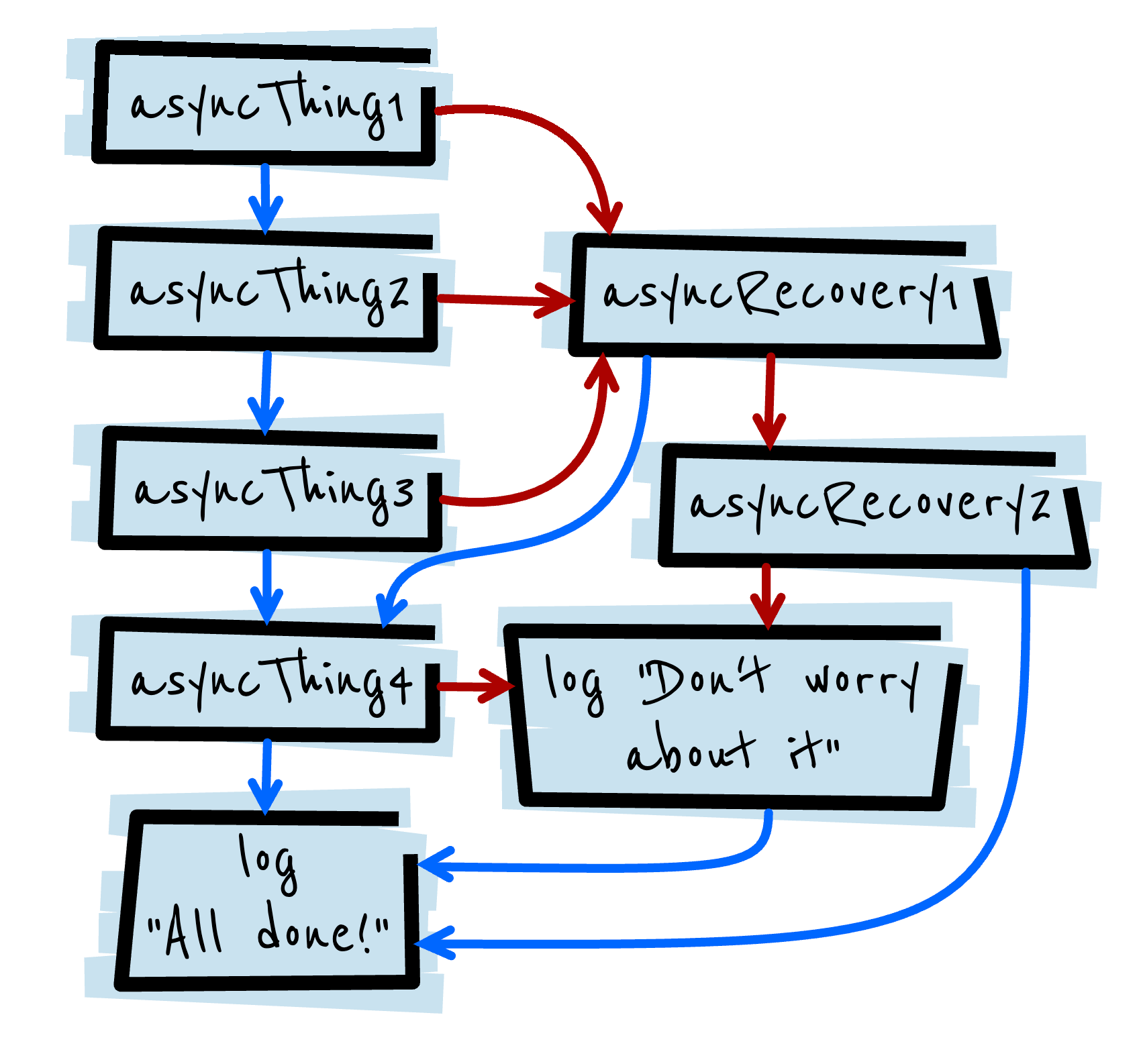# promiese
비동기 작업을 실행하는 함수의 작업의 성공 또는 실패를 나타내어 주는 객체
- 현재 Event Loop에서 현재 실행중인 콜 스택이 완료된 후에 호출 됩니다.
- 비동기 작업이후 호출된 then()을 이용하여 추가한 콜백도 위와 동일합니다.
- then은 여러번 사용하여 콜백을 여러개 추가할 수 있다. 또한 각각의 콜백은 주어진 순서대로 실행된다.
# Promise state
작업 중인지, 성공 했는지, 실패 했는지
pending(대기)→ fullfilled(이행) or rejected(거부)
promise는 excute라는 콜백함수를 가지고 있고,
excute는 각각 resolve, reject 라는 콜백 함수를 인자로 받는다
resolve는 fullfillled일때 어떤 행동을하는 함수 ⇒ resolve 자체의 return은 void
resolve(data) → promise는 data를 가지고 있다.
reject는 rejected일때 어떤 행동을 할 것인지 정하는 함수 ⇒ reject 자체의 return은 void
reject(new Error("error case")); → 에러를 발생시켜서 에러를 핸들링 할 수 있게 만들어 줌 catch 를 이용하여 우리는 error를 핸들링 할 수 있다. Error Object(Message, fileName, lineNumber)
excute에서 resolve나 reject를 호출하지 않으면 영원히 pending상태
# producing vs consumer
- Producer(정보를 제공하는 생산자)
const promise = new Promise((resolve, reject) => {
//doing work (network, fileload)
console.log("Hello")
somthingWorkfunc(() => {
resolve('data')
});
}); // Promise를 만드는 순간 excute 함수가 실행된다. (자동적으로)
- Consumer: then, catch, finally (이 정보를 사용하는 소비자)
promise // chaining을 이용하여 연결한다. jeong
.then(value => { // resolve의 리턴을
console.log(value); // jeong
})
.catch(e => { // reject이 일어날때
console.log(error);
})
.finally(() => { // 성공하든 실패하든 상관 없이
console.log('finally');
});
# chaining
순차적으로 이전 단계의 비동기 작업을 끝마치고 그 결과값을 이용하여 다음 비동기 작업을 실행해야하는 경우
then() 함수의 경우 새로운 promise를 반환한다.
const promise = doSomething();
const promise2 = promise.then(successCallback, failureCallback);
or
const promise2 = doSomething().then(successCallback, failureCallback);
반환값이 반드시 있어야 합니다, 만약 없다면 콜백 함수가 이전의 promise의 결과를 받지 못합니다.
doSomething().then(function(result) {
return doSomethingElse(result);
})
.then(function(newResult) {
return doThirdThing(newResult);
})
.then(function(finalResult) {
console.log('Got the final result: ' + finalResult);
})
.catch(failureCallback);
arrow func
doSomething()
.then(result => doSomethingElse(result))
.then(newResult => doThirdThing(newResult))
.then(finalResult => {
console.log(`Got the final result: ${finalResult}`);
})
.catch(failureCallback);
아래는 프로미스 체인에 대하여 어떤 로직으로 작동하는지 설명한 그림이다.
잘 확인해보고 then catch의 작동에 대하여 생각해보자.
asyncThing1().then(function() {
return asyncThing2();
}).then(function() {
return asyncThing3();
}).catch(function(err) {
return asyncRecovery1();
}).then(function() {
return asyncThing4();
}, function(err) {
return asyncRecovery2();
}).catch(function(err) {
console.log("Don't worry about it");
}).then(function() {
console.log("All done!");
})

mdn Error catch
new Promise((resolve, reject) => {
console.log('Initial');
resolve();
})
.then(() => {
throw new Error('Something failed'); // error를 발생시켜서 reject을 실행시킴
console.log('Do this');
})
.catch(() => { // reject promise를 잡아 오는 catch
console.log('Do that');
})
.then(() => {
console.log('Do this, whatever happened before');
});
// Initial
// Do that
// Do this, whatever happened before
catch is just syntax sugar then(undefined, func)
get('story.json').then(function(response) {
console.log("Success!", response);
}).then(undefined, function(error) {
console.log("Failed!", error);
})
===
get('story.json').then(function(response) {
console.log("Success!", response);
}).catch(function(error) {
console.log("Failed!", error);
})
참고
← async await this →
